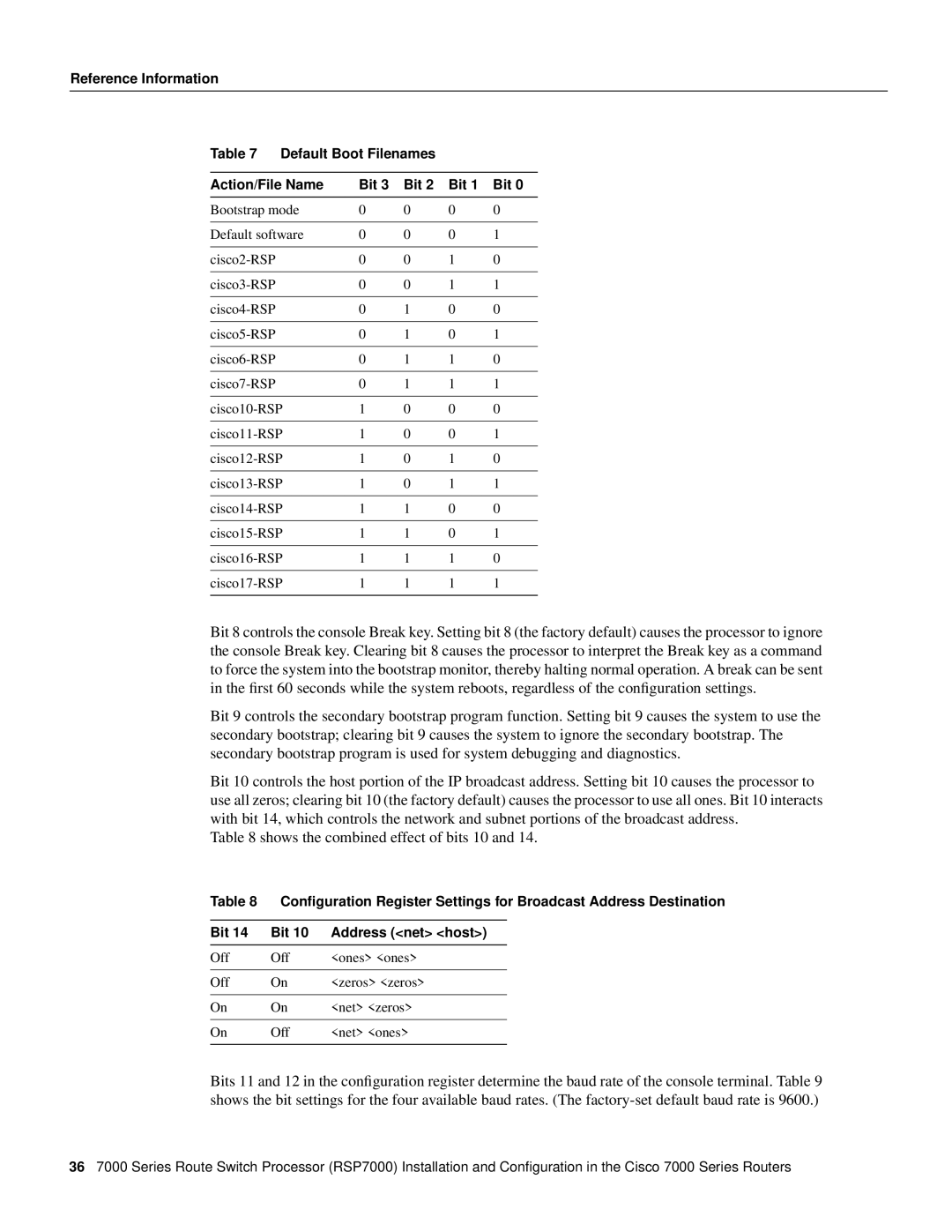
Reference Information
Table 7 Default Boot Filenames
Action/File Name | Bit 3 | Bit 2 | Bit 1 | Bit 0 |
Bootstrap mode | 0 | 0 | 0 | 0 |
|
|
|
|
|
Default software | 0 | 0 | 0 | 1 |
|
|
|
|
|
0 | 0 | 1 | 0 | |
|
|
|
|
|
0 | 0 | 1 | 1 | |
|
|
|
|
|
0 | 1 | 0 | 0 | |
|
|
|
|
|
0 | 1 | 0 | 1 | |
|
|
|
|
|
0 | 1 | 1 | 0 | |
|
|
|
|
|
0 | 1 | 1 | 1 | |
|
|
|
|
|
1 | 0 | 0 | 0 | |
|
|
|
|
|
1 | 0 | 0 | 1 | |
|
|
|
|
|
1 | 0 | 1 | 0 | |
|
|
|
|
|
1 | 0 | 1 | 1 | |
|
|
|
|
|
1 | 1 | 0 | 0 | |
|
|
|
|
|
1 | 1 | 0 | 1 | |
|
|
|
|
|
1 | 1 | 1 | 0 | |
|
|
|
|
|
1 | 1 | 1 | 1 | |
|
|
|
|
|
Bit 8 controls the console Break key. Setting bit 8 (the factory default) causes the processor to ignore the console Break key. Clearing bit 8 causes the processor to interpret the Break key as a command to force the system into the bootstrap monitor, thereby halting normal operation. A break can be sent in the first 60 seconds while the system reboots, regardless of the configuration settings.
Bit 9 controls the secondary bootstrap program function. Setting bit 9 causes the system to use the secondary bootstrap; clearing bit 9 causes the system to ignore the secondary bootstrap. The secondary bootstrap program is used for system debugging and diagnostics.
Bit 10 controls the host portion of the IP broadcast address. Setting bit 10 causes the processor to use all zeros; clearing bit 10 (the factory default) causes the processor to use all ones. Bit 10 interacts with bit 14, which controls the network and subnet portions of the broadcast address.
Table 8 shows the combined effect of bits 10 and 14.
Table 8 Configuration Register Settings for Broadcast Address Destination
Bit 14 | Bit 10 Address (<net> <host>) | |
Off | Off | <ones> <ones> |
|
|
|
Off | On | <zeros> <zeros> |
|
|
|
On | On | <net> <zeros> |
|
|
|
On | Off | <net> <ones> |
|
|
|
Bits 11 and 12 in the configuration register determine the baud rate of the console terminal. Table 9 shows the bit settings for the four available baud rates. (The
367000 Series Route Switch Processor (RSP7000) Installation and Configuration in the Cisco 7000 Series Routers
